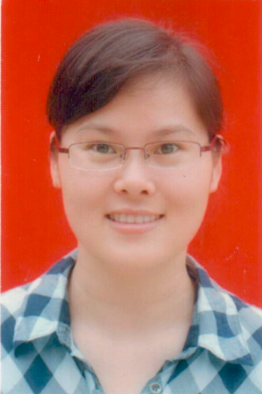Ni GY*, Zhao P, Huang QQ, Zhu LW, Hou YP, Yu YN, Ye YH, Ouyang L. Mikania micrantha invasion enhances the carbon (C) transfer from plant to soil and mediates the soil C utilization through altering microbial community. Science of the Total Environment, 2020, 711:135020.
Ni GY, Zhao P, Ye YH, Zhu LW, Hou YP, Huang QQ, Wu W, Ouyang L. High photosynthesynthetic capacity and energy-use efficiency benefit both growth and chemical defense in invasive plants. Chemoecology, 2020, 30:69-78.
Chen X, Zhao P, Ouyang L, Zhu LW, Ni GY, Schafer KVR. Whole-plant water hydraulic integrity to predict drought-induced Eucalyptus urophylla mortality under drought stress, Forest Ecology and Management 2020, 468: 118179.
Wei W, Zhu P, Chen PD, Huang QQ, Bai XF, Ni GY, Hou YP. Mixed evidence for plant-soil feedbacks in forest invasions, Oecologia 2020, 193(3): 665-676.
Li YQ, Zhao P, Zhang ZZ, Zhu LW, Ouyang L, Ni GY. Inconsistent responses of transpiration of different canopy layers to simulated canopy and understory N depositions in a low‐subtropical evergreen broadleaf forest. Journal of Geophysical Research: Biogeosciences 2020, 125, e2019JG005594.
Hu YT, Zhao P, Huang YQ, Zhu LW, Ni GY, Zhao XH, Huang ZH. Hydrologic balance, net primary productivity and water use efficiency of the introduced exotic Eucalyptus grandis x Eucalyptus urophylla plantation in south-western China. Journal of Plant Ecology 2019, 12(6): 982-992.
Zhu LW, Hu YT, Zhao XH, Zhao P, Ouyang L, Ni GY, Liu N. Specific responses of sap flux and leaf functional traits to simulated canopy and understory nitrogen additions in a deciduous broadleaf forest. Functional Plant Biology 2019, 46(11): 986-993.
Hu YT, Zhao P, Zhu LW, Zhao XH, Ni GY, Ouyang L, Sch?fer KVR, Shen WJ. Responses of sap flux and intrinsic water use efficiency to canopy and understory nitrogen addition in a temperate broadleaved deciduous forest. Science of the Total Environment 2019, 648: 325-336.
Hu YT, Zhao P, Shen WJ, Zhu LW, Ni GY, Zhao XH, Zhang ZZ, Rao XQ, Ouyang L, Zeng XM, Sun D, Lin YB. Responses of Tree Transpiration and Growth to Seasonal Rainfall Redistribution in a Subtropical Evergreen Broad-Leaved Forest. Ecosystems 2018, 21(4): 811-826.
Hu YT, Gao JG, Zhao P, Shen WJ, Zhao PQ, Zhu LW, Ni GY, Niu JF, Ouyang L. Water transport of native and exotic tree species in relation to xylem anatomical characteristics in low subtropical China. Journal of Plant Ecology 2018, 11:423-433.
Ni GY, Zimbalatti G, Murphy C, Barnett A, Arsenault B, Li G, Cockshutt A, Campbell D. Arctic Micromonas uses protein pools and non-photochemical quenching to cope with temperature restrictions on Photosystem II protein turnover. Photosynthesis Research 2017, 131:203-220.
Murphy CD, Ni GY, Li G, Barnett A, Xu K, Grant-Burt J, Liefer J, Suggett DJ, Campbell DA. Quantitating active photosystem II reaction center content from fluorescence induction transients. Limnology and Oceanography: Methods 2017, 15:54-69.
Ouyang L; Zhao P, Zhu LW, Zhang ZZ, Zhao XH, Ni GY. Difference in response of water use to evaporative demand for diffuse-porous versus ring-porous tree species under N addition in a temperate forest. Ecohydrology 2017, 10(4): e1829.
Hu YT, Zhao P, Niu JF, Sun ZW, Zhu LW; Ni GY. Canopy stomatal uptake of NOX, SO2 and O3 by mature urban plantations based on sap flow measurement. Atmospheric Environment 2016, 125: 165-177.
Niu JF, Zhao P, Sun ZW, Zhu LW, Ni GY, Zeng XP, Zhang ZZ, Zhao XH, Zhao PQ, Gao JG, Hu YT, Zeng XM, Ouyang L. Stomatal uptake of O3 in a Schima superba plantation in subtropical China derived from sap flow measurements. Science of the Total Environment 2016, 545-546:465-475.
Hou YP, Peng SL, Lin ZG, Huang QQ, Ni GY, Zhao Na. Fast-growing and poorly shade-tolerant invasive species may exhibit higher physiological but not morphological plasticity compared with non-invasive species. Biological Invasions 2015, 17:1555-1567.
Zhu LW, Zhao P, Wang Q, Ni GY, Niu JF, Zhao XH, Zhang ZZ, Zhao PQ, Gao JG, Huang YQ, Gu DX, Zhang ZF. Stomatal and hydraulic conductance and water use in a Eucalypt plantation in Guangxi, southern China. Agricultural & Forest Meteorology 2015. 202: 61-68.
Wang H, Zhao P, Zou LL, McCarthy HR, Zeng XP, Ni GY, Rao XQ. CO2 uptake of a mature Acacia mangium plantation estimated from sap flow measurements and stable carbon isotope discrimination. Biogeosciences 2014, 11:1393-1411.
Xiao S, Ni GY, Callaway RM. Models of experimentally derived competitive effects predict biogeographical differenced in the abundance of invasive and native plant species. PLoS ONE 2013, 8(11):e78625.
Wu W, Zhou RC, Ni GY, Shen H, Ge XJ. Is a new invasive herb emerging? Molecular con?rmation and preliminary evaluation of natural hybridization between invasive Sphagneticola trilobata (Asteraceae) and its native congener S. calendulacea in South China. Biological Invasions 2013, 15:75-88.
Zhu LW, Zhao P, Ni GY, Cao QP, Zhou CM, Zeng XP Individual and Stand-level stem CO2 efflux in a subtropical Schima superba plantation. Biogeosciences 2012, 9:3729-3737.
Hou YP, Peng SL, Ni GY, Chen BM. Inhibition of an invasive species (Mikania micrantha) by native dominant trees of three different forests in lower subtropical China. Allelopathy Journal 2012, 29:307-314.
Hou YP, Peng SL, Chen BM, Ni GY. Inhibition of an invasive plant (Mikania micrantha H.B.K.) by soils of three different forests in lower substropical China. Biological Invasions 2011, 13:381-391.
Ni GY, Zhao P, Wu W, Lu XK, Zhao XH, Zhu LW, Niu JF. A hybrid of the invasive plant Sphagneticola trilobata has similar competitive ability but different response to nitrogen deposition compared to parent. Ecological Research 2014, 29:331-339.
Ni GY, Zhao P, Huang QQ, Hou YP, Zhou CM, Cao QP, Peng SL. Exploring the Novel Weapons Hypothesis with invasive plant species in China. Allelopathy Journal 2012, 29:199-214.
Ni GY, Schaffner U, Peng SL, Callaway RM. Acroptilon repens, an Asian invader, has stronger competitive effects on species from America than species from its native range. Biological Invasions 2010, 12:3653-3663.
